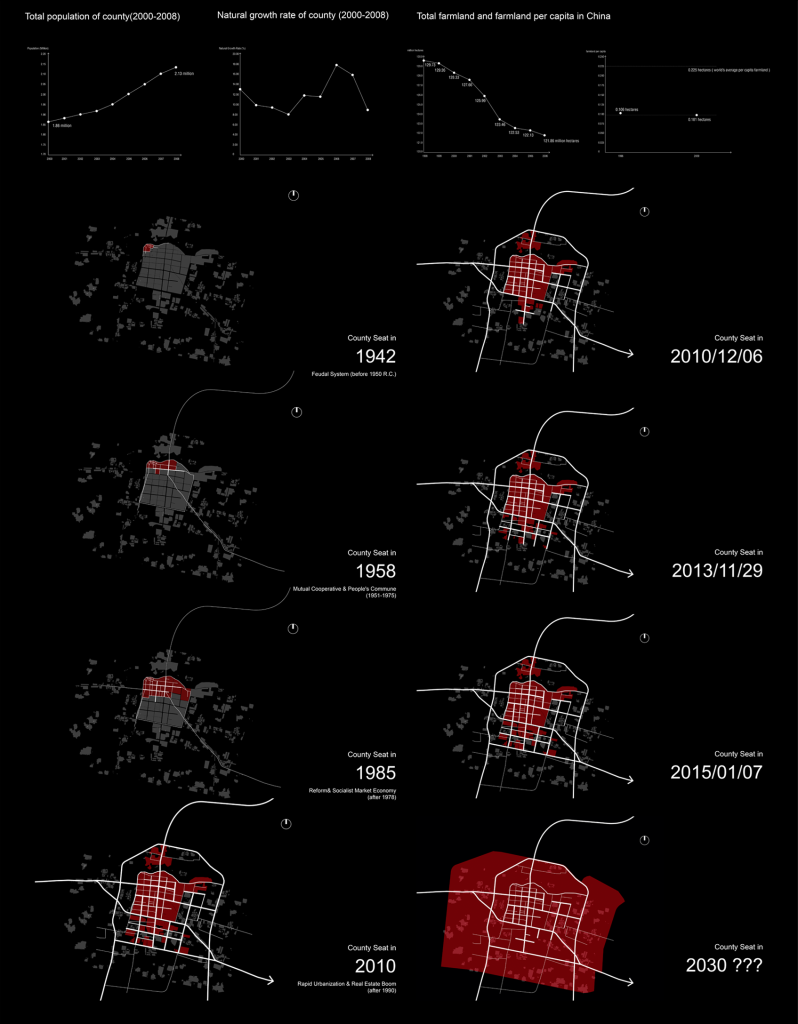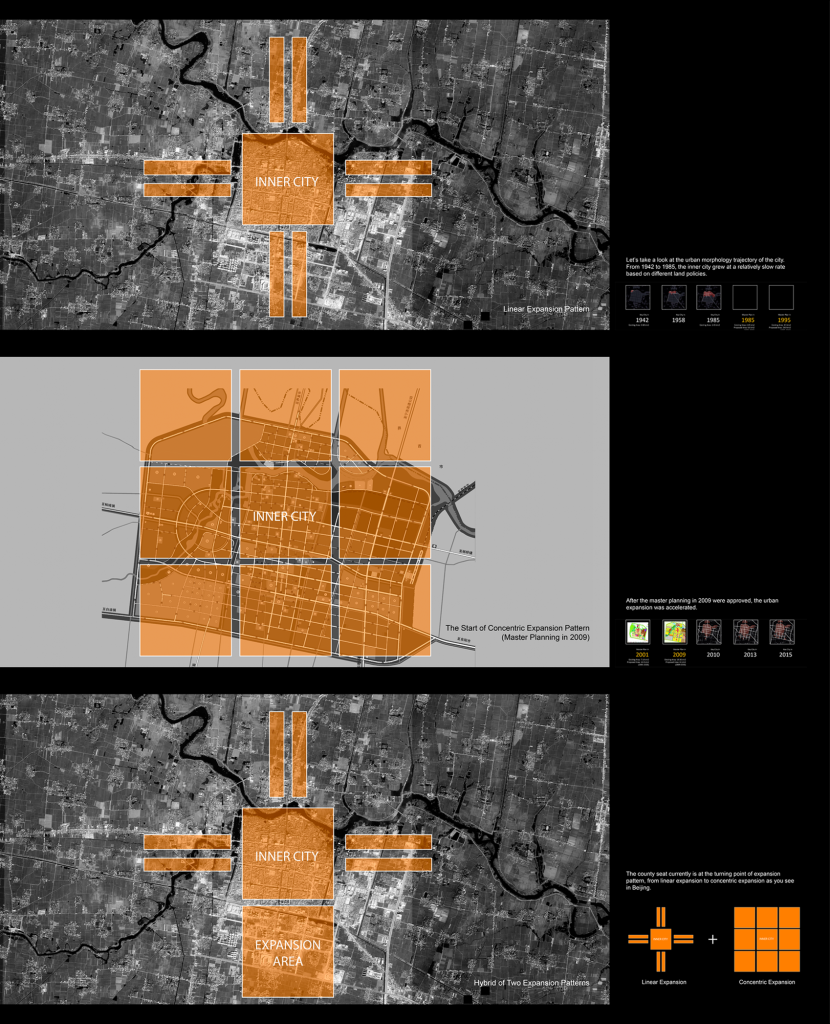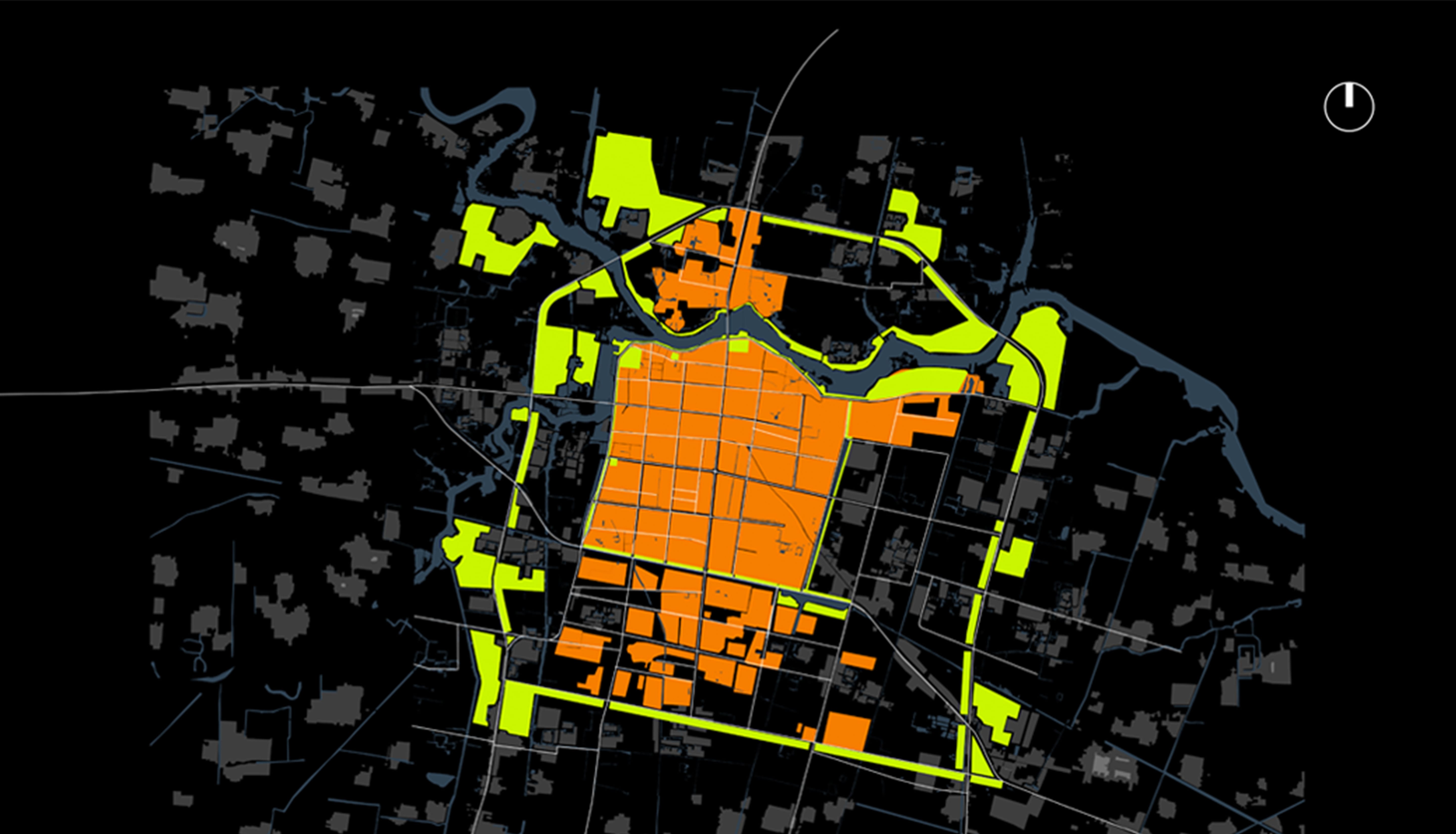临泉县城发端于河流,在过去将近 80 年的时间里,它以相对自发地状态形成小型集镇,再在行政区划的指令的影响下(1934年建县)由集镇发展成为县级市,然后再在人口压力(1950-1980)和市场开发(2000-2010)的影响下形成目前的城市规模。因此,临泉的城市外围主要是自然景观:包括泉河、流鞍河等水系、行政村落、以及大规模的农田;内部主要是城市肌理:包括不同阶段形成建筑类型以及超大街区。因此,景观策略的出发点是消除这种人工/自然/城市/农村的截然对立状态,意图重新打造这座县级市的自然风貌和城市特性,激活现有的景观资源,营造有品质的城市开放空间系统。
Linquan County originated from rivers and has formed small towns in a relatively spontaneous state for nearly 80 years. Under the influence of administrative division instructions (established in 1934), it developed from a town to a county-level city, and then formed its current urban scale under population pressure (1950-1980) and market development (2000-2010). Therefore, the urban periphery of Linquan is mainly composed of natural landscapes, including water systems such as Quan River and Liu’an River, administrative villages, and large-scale farmland; The interior mainly consists of urban fabrics, including building types formed at different stages and super large blocks. Therefore, the starting point of landscape strategy is to eliminate the stark opposition between artificial/natural/urban/rural areas, with the intention of reshaping the natural landscape and urban characteristics of this county-level city, activating existing landscape resources, and creating a high-quality urban open space system.


